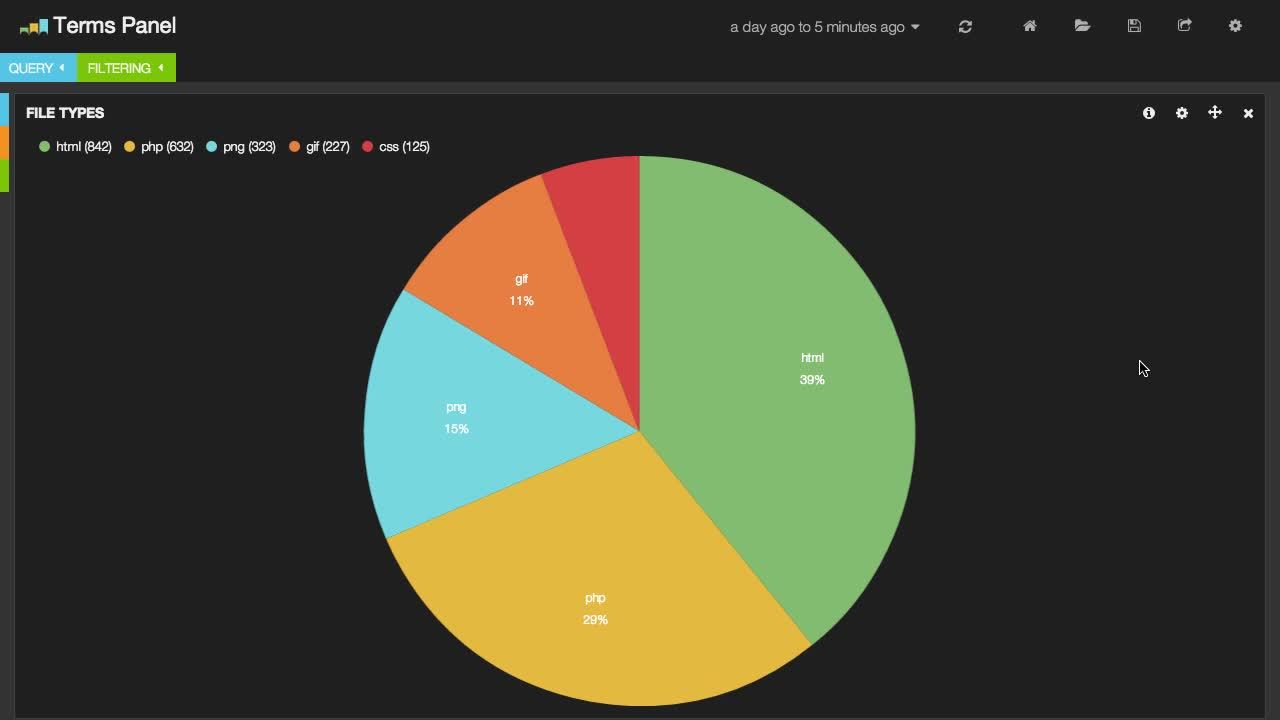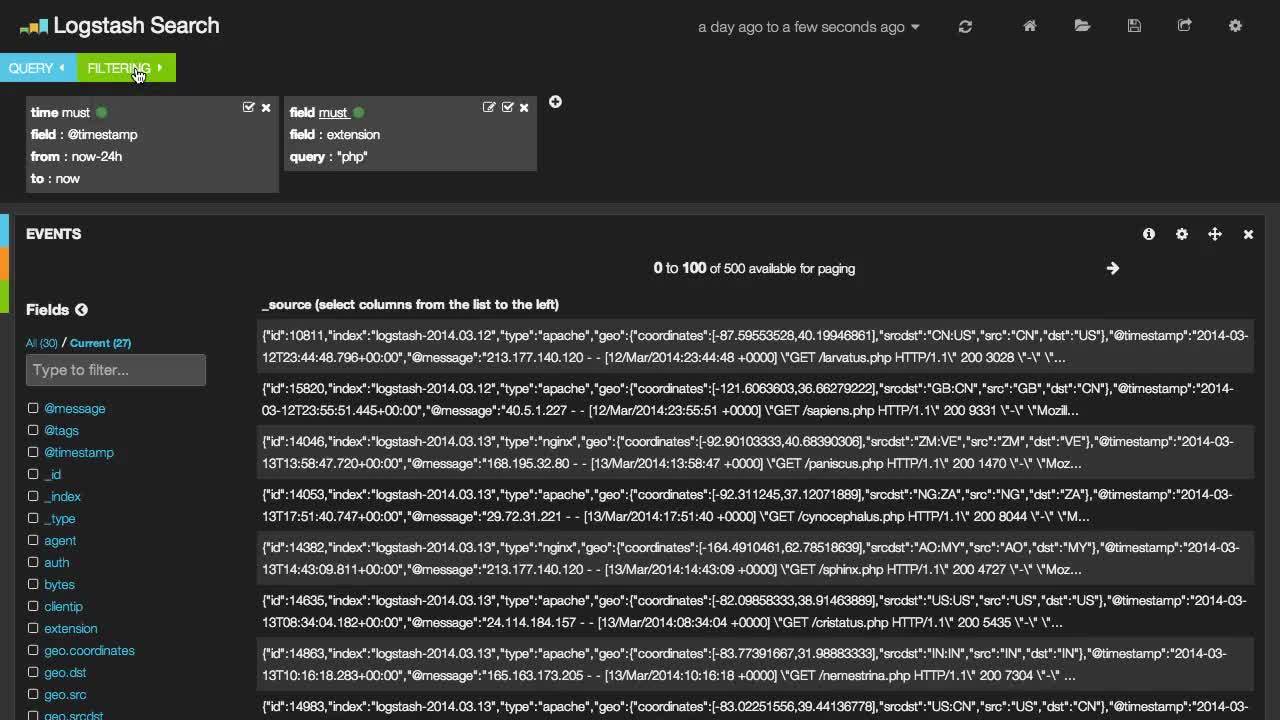Kibana 3.0.0 GA is now available!
Today is a big day for Elasticsearch and the Kibana team. After 5 milestone releases and over 1000 commits, we’re happy to announce the release of Kibana 3.0.0 GA. Over the last year, Kibana has moved from a simple interface to search logs to a fully featured, interactive analysis and dashboard system for any type of data. Everyday, we’re incredibly inspired by the people who tell us they’ve solved major problems, optimized their existing deployments and found insights in places they never imagined.
Changes since milestone 5
We’re thrilled to say there have been many bugs fixed since milestone 5, but we’ve introduced no breaking changes! One hundred percent of the focus has been on delivering a stable, consistent experience.
What do I need to do to upgrade?
If you’re coming from milestone 5? Nothing! Simply install and go. If you’re upgrading from milestone 4 your dashboards schema is compatible, but you should know that the derivequeries panel has been deprecated (See this blog post for more details.) If you’re coming from milestone 4, you may need to clear your browser cache upon upgrading. We have put in place a number of cache busting strategies to limit the need for this in the future.
More information
We’ve written some great tutorials that you can find in the Kibana Documentation section. If you’re using Kibana for the first time, make sure to read the ten minute walk through.
Additionally, these pieces of documentation will be useful to getting you up and running:
- The Queries and Filters documentation explains how to use Kibana’s query input, including constructing Apache Lucene queries, adding multiple queries and setting query legend values. This section also covers adding and removing the filters that Kibana adds dynamically when you interact with certain panels.
- The Rows and Panels section covers adding new panels and creating custom dashboards from scratch.
- The Saving and Sharing overview tells you all about how to ‘reuse’ your dashboards and export to other users.
- We’ve also written a complete guide to the Kibana Schema, breaking down every object and property in the JSON document that describes every Kibana dashboard.
- For more advanced features, including building dashboards based on URL parameters and other logic, take a look at the Templated and Scripted Dashboards documentation.
Getting Started Videos
We’ve also created some getting-started videos to guide you through Kibana’s many panel types. These two are the first in a series, so stay tuned to this blog to learn when more are on offer.
For a deeper dive, you can attend our live Kibana webcast, hosted by yours truly, on April 9th. You can register now to attend the session, which will include live Q&A following the presentation.
Introduction to the Kibana Terms Panel
Using the Kibana Table Panel
Let Us Know What You Think
Download Kibana 3.0.0 and check out all of the updates! As always, feedback is welcome and encouraged!

